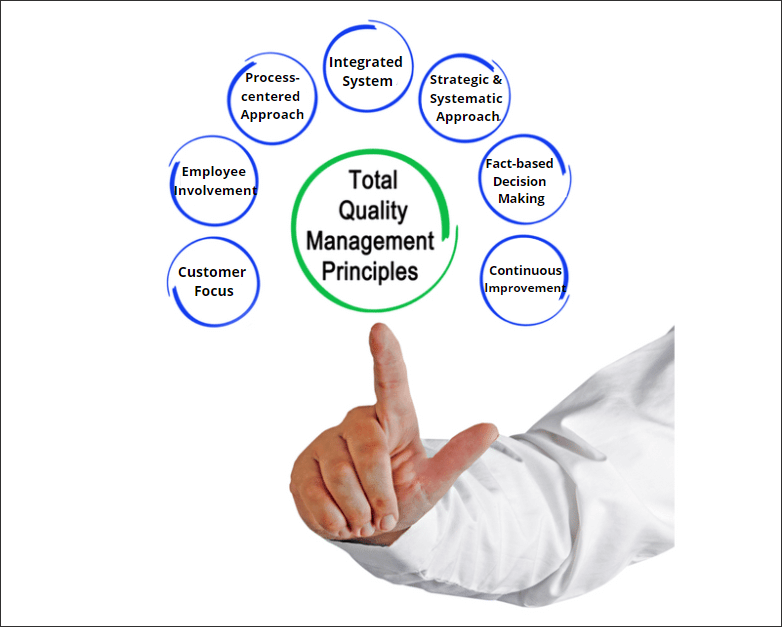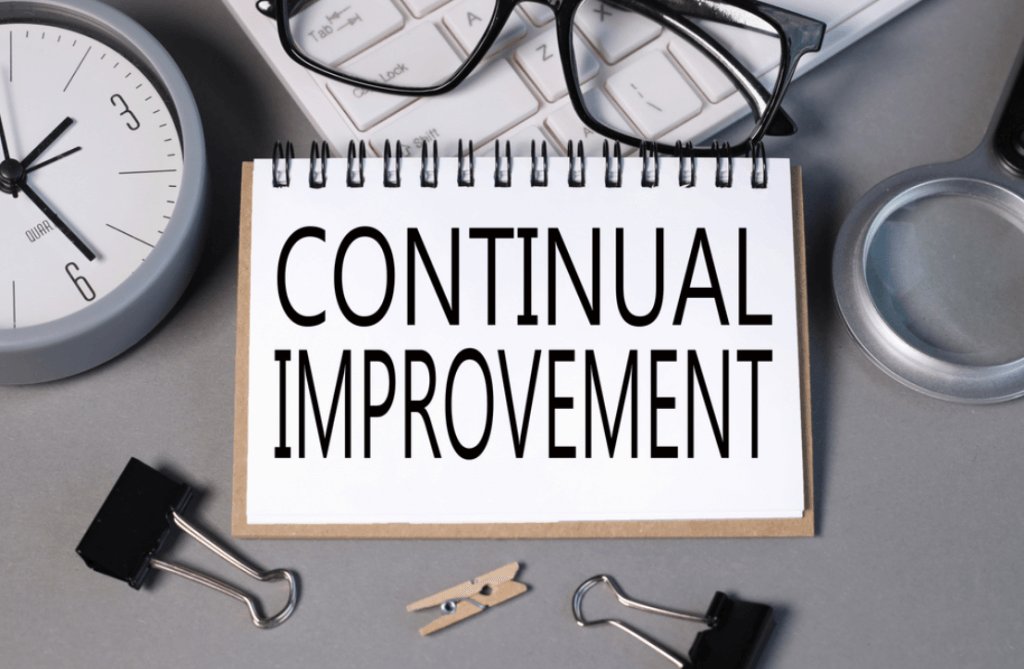Total Quality Management, or TQM for short, is a process improvement methodology that helps organizations aim to improve the quality of their products and services in the long run. It provides policies and techniques to develop effective strategies suitable for the continuous improvement of various processes in the business enterprise.
Organizations that want to achieve and sustain their goals and objectives for a long time must understand the importance of TQM. They hire quality management professionals trained and knowledgeable in total quality management to improve their business processes. Also, these professionals have a detailed comprehension of the 8 fundamental principles of total quality management.

Jump ahead to
What is Total Quality Management?
The term TQM or Total Quality Management originated in the 1950s in Japan. It is a management approach that aims to achieve long-term success through continuous quality improvement. In TQM, all organization members play a vital role in improving the business processes. This also includes building a different value of culture at all levels, from junior staff to senior managers. Every person in the enterprise has a role to play. The main objective of total quality management is sustaining the continual improvement of the business processes to deliver “quality” products and services that effectively meet the requirements of their customers.
Importance of Total Quality Management for Continuous Improvement
The role of quality management in any organization is to improve the delivery of quality products and services to their customers. To achieve this, each quality development process must be improved by identifying defects or reducing variation. In TQM, this is given priority. Here, every professional works towards the common goal of attaining organizational objectives. Total quality management promotes continuous improvement by encouraging the whole organization to adopt quality management principles.
One of the essential advantages of total quality management is reducing the cost of quality improvement processes. It helps in identifying and mitigating risks. TQM also helps in resolving problems before they occur and during operations. And it increases customer satisfaction by delivering products and services with low costs and meeting their expectations. Every employee feels like they are contributing to the success of their organization. Thus, we can conclude that total quality management helps achieve organizational objectives by increasing the organization’s overall productivity.
Principles of Total Quality Management
TQM has several elements that, when adopted together, help organizations attain their goals and objectives. Listed below are the 8 fundamental principles of total quality management that are required for quality improvement:
Customer Focus
TQM emphasizes the end-users or customers of the products and services delivered by the organization. This means the customers determine the quality of these products and services. This can be known by taking customer feedback and communicating with them about their requirements.
Employee Involvement
This is a vital aspect of total quality management that focuses on the involvement of every member of the organization in the quality improvement process. From entry-level employees to the leaders of the organization, everyone feels empowered. This increases their satisfaction level with their work, reflecting the organization’s overall productivity.
Process-centered Approach
Total quality management cannot be implemented without a definite and consistent process-centered approach. Processes are predetermined and predictable, thus limiting variation. Monitoring and assessing predefined processes are easy and lead to increased performance or production.
Integrated System
Organizations that adopt total quality management have an integrated system that allows them to run a flow of communication and understanding in a horizontal process. In this system, every employee understands the organization’s policies, strategies, and objectives. This will also help quality management professionals identify the areas that need improvement.
Strategic and Systematic Approach
Policymaking and strategic planning are integral parts of total quality management. It provides a systematic approach to carrying out various operations involved in the quality improvement process. Quality forms the core component of the strategic plan. Thus, helping attain the visions and missions of the organization.
Fact-based Decision Making
In TQM, decisions are made using facts or statistical data collected. These inputs are then analyzed to reach the required consensus. This allows organizations to make informed decisions based on data which can be sales and revenue figures, market research, customer retention rates, etc. It leads to making predictions based on past figures and producing accurate results.
Communications
Improvement cannot take place without effective communication within the organization. TQM allows every member of the organization to communicate the organization’s objectives and the requirements of the project effectively. Every strategy and policy aligned with objectives are communicated with the employees. This ultimately helps adopt the principles of total quality management in the organization.
Continuous Improvement

Attaining business efficiency and customer satisfaction is the primary objective of total quality management. This is done systematically through continuous improvement. Quality improvement is a continuous process in TQM. This helps organizations attain their objectives and sustain long-term success over their competition.
In organizations adopting the principles of total quality management, the leaders and decision-makers, growth, support, training, and communication are emphasized. Thus, every employee is trained and made aware of the goals of continuous quality improvement. Their actions must align with the need of the organization. This is how quality products and services are delivered, by building an environment of continuous improvement through effective communication.
Conclusion
By following the fundamental principles of total quality management, organizations can become analytical and creative in formulating strategies to meet the expectations of their stakeholders as well as stay ahead of their competitors. TQM helps organizations adapt to the changing dynamics of the global economy. To implement total quality management, the organization must invest in training employees in quality management professional certifications and clearly defining the goals. It is a lengthy process and should be approached in phases to build a culture of continuous improvement.



